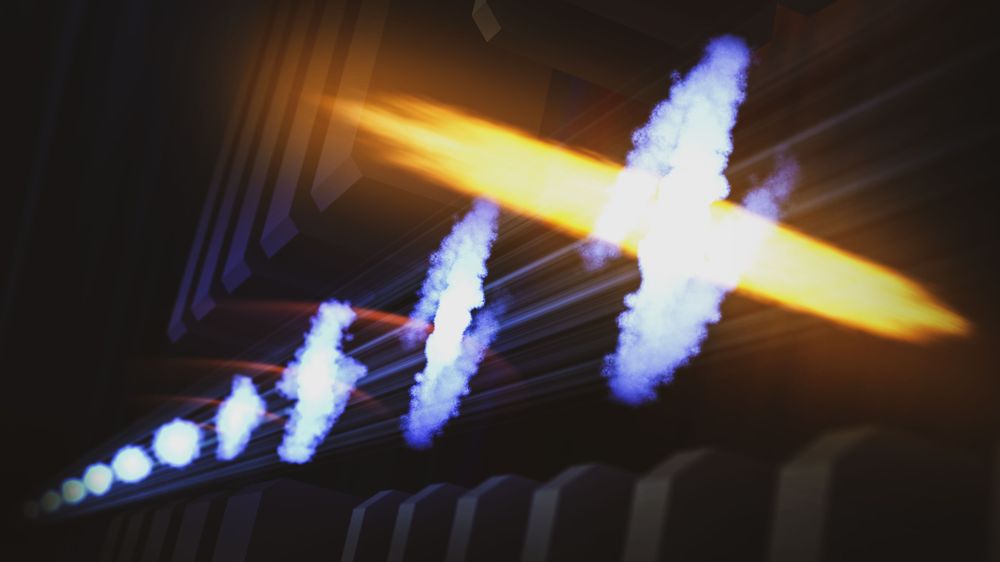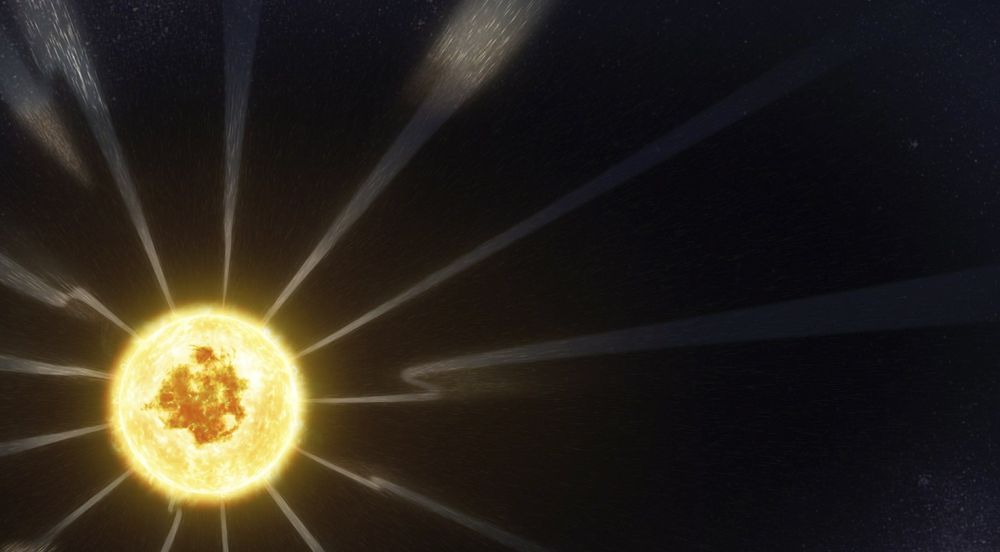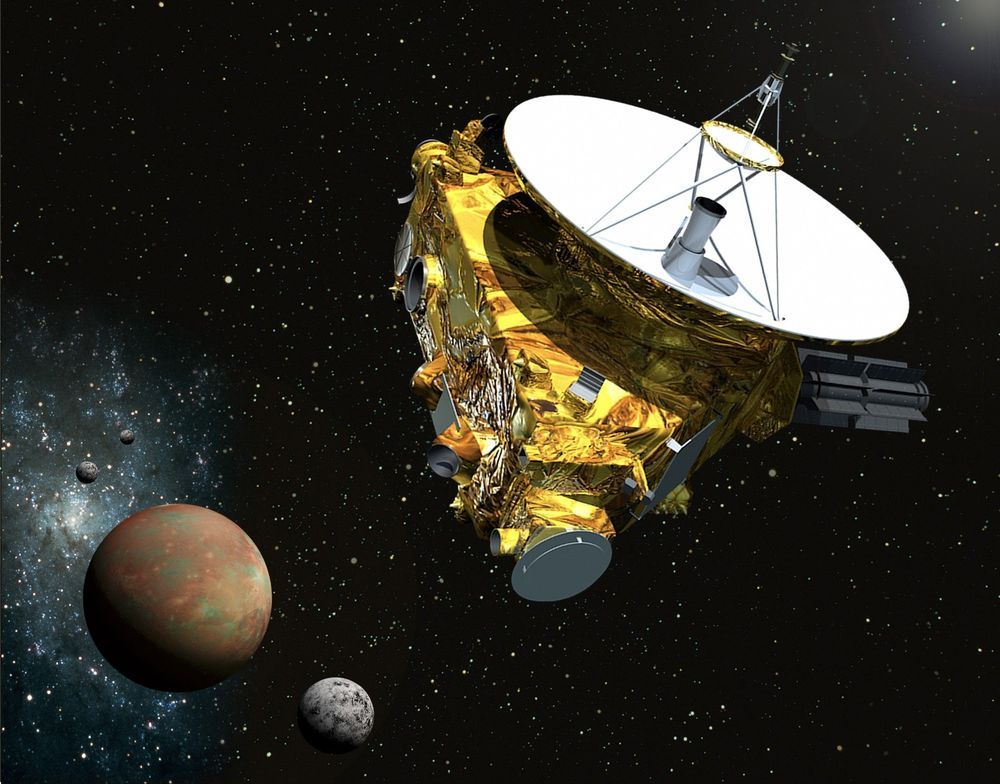Called XLEAP, the new method will provide sharp views of electrons in chemical processes that take place in billionths of a billionth of a second and drive crucial aspects of life.



The higgs boson is most likely the greatest particle because it could allow for antigravity because it turns off the mass of an object. Basically it would be the master key for even understanding the dimensions of physics. Simply by allowing a near genesis. It can essentially allow for matter creation a sorta building block for creation. It is one of the greatest particles ever discovered. A particle so powerful that when harnessed it would almost allow for anything to happen. You could have crispr teleportation with higgs field dampening. Let’s say that myth is real then if it were real then it would lead to a particle like the higgs boson. Once harnessed it could allow for alien like technologies essentially a very powerful particle to allow to true impossibilities. I think even in a grain of sand we can find endless possibilities which is proof evident of something beyond understanding. Some have said that we started out in just hydrogen but the physics created the universe. Which would mean once the higgs is harnessed it could allow for creation technology or what the exterrestials knew for generations that we are never alone the universe is filled with wonder. Basically the higgs would allow for antigravity but all the mythological things. It would prove the existence of aliens even god most likely. Science could prove the most important thing that it could bring civilization into a new level technology no longer bound by terrestrial things but essentially it could allow for anything once harnessed.
Theoretical physicist Lawrence Krauss explains the possible meaning and significance of finding the Higgs.

One of the problems is how to overcome the strong electrical repulsion between atomic nuclei which requires high energies to make them fuse. But fusion could be initiated at lower energies with electromagnetic fields that are generated, for example, by state-of-the-art free electron lasers emitting X-ray light. Researchers at the Helmholtz-Zentrum Dresden-Rossendorf (HZDR) describe how this could be done in the journal Physical Review C.
During nuclear fusion two atomic nuclei fuse into one new nucleus. In the lab this can be done by particle accelerators, when researchers use fusion reactions to create fast free neutrons for other experiments. On a much larger scale, the idea is to implement controlled fusion of light nuclei to generate power—with the sun acting as the model: its energy is the product of a series of fusion reactions that take place in its interior.
For many years, scientists have been working on strategies for generating power from fusion energy. “On the one hand we are looking at a practically limitless source of power. On the other hand, there are all the many technological hurdles that we want to help surmount through our work,” says Professor Ralf Schützhold, Director of the Department of Theoretical Physics at HZDR, describing the motivation for his research.

An international group of scientists, including Andrey Savelyev, associate professor of the Institute of Physical and Mathematical Sciences and Information Technologies of the IKBFU, has improved a computer program that helps simulate the behavior of photons when interacting with hydrogen spilled in intergalactic space. Results are published in the scientific journal Monthly Notices of the Royal Astronomical Society.
Andrey Saveliev states, “In the Universe there are extragalactic objects such as blazars, which very intensively generate a powerful gamma-ray flux, part of photons from this stream reaches the Earth, as they say, directly, and part are converted along the way into electrons, then again converted into photons and only then get to us. The problem here is that mathematical calculations say that a certain number of photons should reach the Earth, and in fact it is much less.”
Scientists, according to Andrey Savelyev, today have two versions of why this happens. The first is that a photon, after being converted into an electron (and this, as is known, in contrast to a neutral photon, a charged particle) falls into a magnetic field, deviates from its path and does not reach the Earth, even after being transformed again into the photon.

CAPE CANAVERAL, Fla. (AP) — NASA’s sun-skimming spacecraft, the Parker Solar Probe, is surprising scientists with its unprecedented close views of our star.
Scientists released the first results from the mission Wednesday. They observed bursts of energetic particles never seen before on such a small scale as well as switchback-like reversals in the out-flowing solar magnetic field that seem to whip up the solar wind.
NASA’s Nicola Fox compared this unexpected switchback phenomenon to the cracking of a whip.

An instrument aboard NASA’s New Horizons is sending back data that could help scientists predict when the unmanned deep-space probe will reach interstellar space. Using the Solar Wind Around Pluto (SWAP) instrument aboard the spacecraft, a team of researchers led by Southwest Research Institute are learning more about how the solar winds change in the outer regions of the solar system.
Though the solar system may look like a big ball of nuclear fire at the center surrounded by a scattering of tiny, solid objects sitting in a lot of very hard vacuum, all that nothingness is permeated by the solar winds – an unceasing flow of ionized particles from the Sun that forms an uneven bubble around our family of planets called the heliosphere.
The outer limit of the heliosphere is where it encounters materials from interstellar space. This is the point where the solar wind slow down to subsonic speeds due to interacting and then is stopped altogether by the interstellar medium. These two points are called, respectively, the termination shock and the heliopause.


Fresh evidence of an unknown particle that could carry a fifth force of nature gives the NA64 collaboration at CERN a new incentive to continue searches.
In 2015, a team of scientists spotted an unexpected glitch, or “anomaly,” in a nuclear transition that could be explained by the production of an unknown particle. About a year later, theorists suggested that the new particle could be evidence of a new fundamental force of nature, in addition to electromagnetism, gravity and the strong and weak forces. The findings caught worldwide attention and prompted, among other studies, a direct search for the particle by the NA64 collaboration at CERN.
A new paper (pdf) from the same team, led by Attila Krasznahorkay at the Atomki institute in Hungary, now reports another anomaly, in a similar nuclear transition, that could also be explained by the same hypothetical particle.

Determining the quantum mechanical behavior of many interacting particles is essential to solving important problems in a variety of scientific fields, including physics, chemistry and mathematics. For instance, in order to describe the electronic structure of materials and molecules, researchers first need to find the ground, excited and thermal states of the Born-Oppenheimer Hamiltonian approximation. In quantum chemistry, the Born-Oppenheimer approximation is the assumption that electronic and nuclear motions in molecules can be separated.
A variety of other scientific problems also require the accurate computation of Hamiltonian ground, excited and thermal states on a quantum computer. An important example are combinatorial optimization problems, which can be reduced to finding the ground state of suitable spin systems.
So far, techniques for computing Hamiltonian eigenstates on quantum computers have been primarily based on phase estimation or variational algorithms, which are designed to approximate the lowest energy eigenstate (i.e., ground state) and a number of excited states. Unfortunately, these techniques can have significant disadvantages, which make them impracticable for solving many scientific problems.

O,.,o.
In 1981 astronomer Robert Kirshner made a shocking intergalactic discovery. 700 million light years from the Earth lies an enormous, barren sphere known as the Boötes Void. Its very existence challenges what we know about the universe and its origins. The Void is at least ten times larger than the rules of modern physics say is reasonably likely. As a structure, the Void verges on the impossible.
Yet, this disturbing formation is consistent with Nikolai Kardashevs 1962 theory of advanced alien civilizations and their behavior. Could it be home to a hyper-intelligent extraterrestrial species? A void is a massive region of space that holds either minimal or no galaxies. They are created when mass collapses, and is followed by subatomic particle implosions. With a diameter of 330 million light years, the Boötes Void makes up 0.27% of the observable universe. But according to established scientific understanding its huge size is impossible. The Big Bang theory states that the universe is 14 billion years old, and that it has been expanding exponentially since its birth. Given the age of the universe, there has only been enough time for voids to form that are tens of millions of light years across, not hundreds. Stranger still, is just how empty the Bootes Void is.
It contains only 60 galaxies, around 10,000 fewer than we should expect to find in such a vast expanse. Many believe this means the void is the first observable proof of a Kardashev scale III master race civilization. In 1964 Nikolai Kardashev – now Deputy Director of Russias Astro Space Centre – published his theory for extra terrestrial development, arguing that civilizations develop in 4 stages. A civilization reaches the third phase when it becomes so technologically advanced that it is able to convert starlight into usable energy. At this point, the species is able to replicate itself at astonishing rates, spreading out across the universe and colonizing galaxies. Many consider this is a necessary step for any civilization to avoid extinction. Could this explain the Voids chilling dearth of stars?